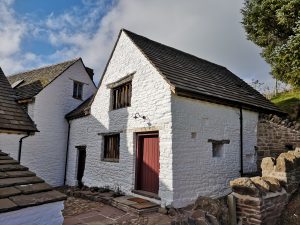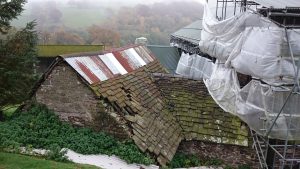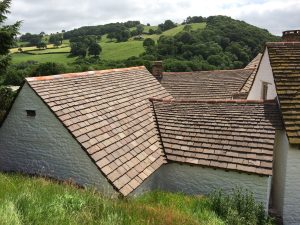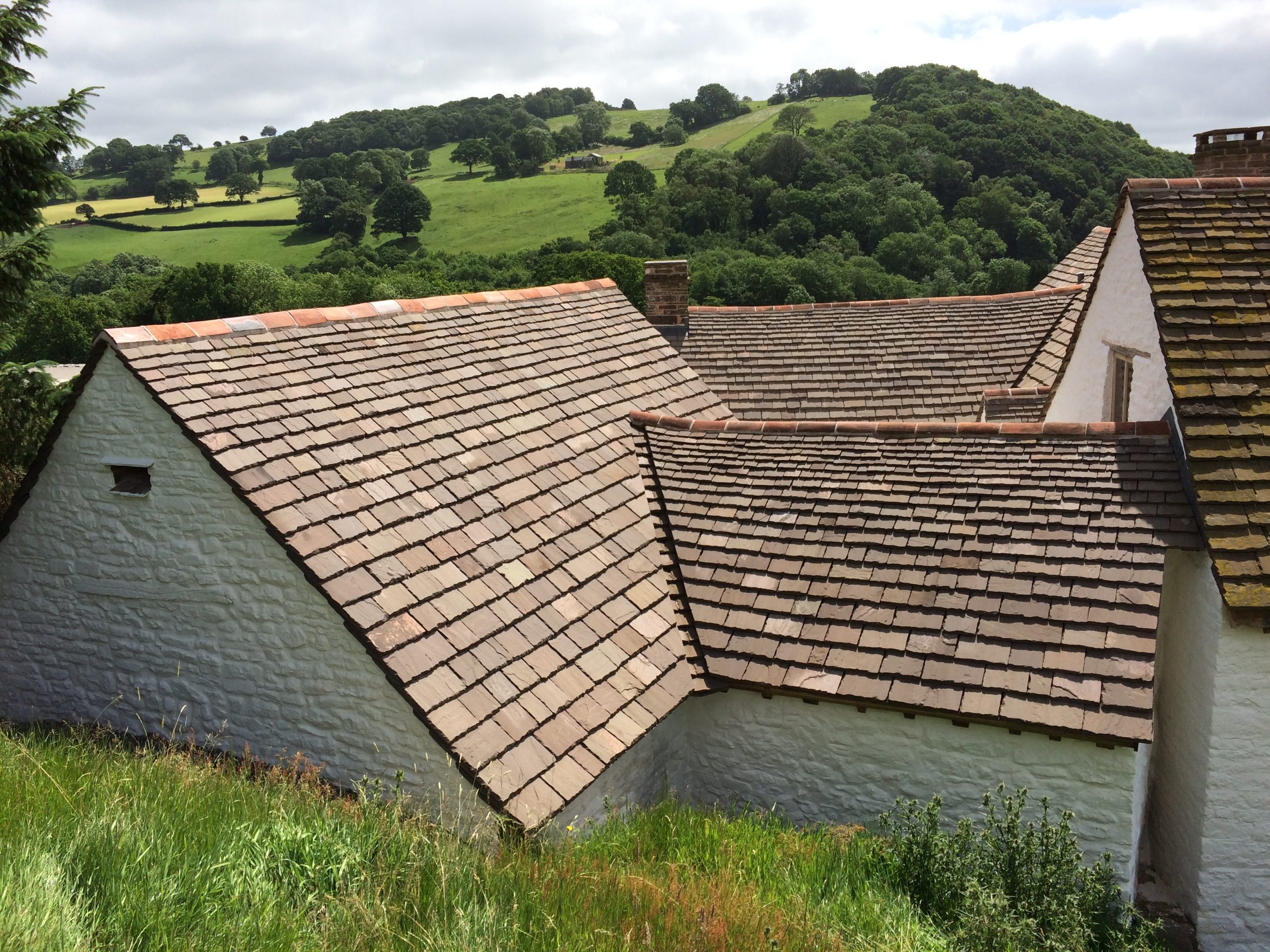Award’s 2021 Winner’s Spotlight: Small Scale Mitigation
Llwyn Celyn Restoration Project
Wildwood Ecology and The Landmark Trust
This project involved full restoration of a Grade I listed building (regarded by Cadw as one of the finest medieval hall houses in Wales) and associated agricultural buildings including a Grade II Listed stone barn (Beast House), stone Threshing Barn and Cow Shed, a smaller stone Drying Shed and a series of modern agricultural sheds. The site was originally surveyed by Wildwood Ecology in 2013 with seven species of bat identified as being present, including lesser horseshoe, brown longeared and Natterer’s.

Planning permission was achieved in March 2016 for extensive repairs and renovations across the Llwyn Celyn site to restore the main house to a habitable condition, to be used as holiday accommodation by The Landmark Trust; restoration of the Beast House, with creation of public information area and viewing mezzanine; restoration and conversion of the Threshing Barn into bunk-house style accommodation and facilities; repair to the Cowshed, to house heating equipment for the site and an outdoor store; repairs to the drying shed; and demolition of the Dutch barn, tin shed, and pole barn.
A bat mitigation licence was applied for in late 2016, with amendments approved in early 2017. Preliminary site mobilisation and ground works commenced, and all extensive works were finally completed in 2019, ready to receive guests in September of that same year.
Bat mitigation and compensation measures were completed by August 2017 and monitoring of replacement roosts and habitat enhancement continued (ongoing to 2021). Ecological measures included detailed input to the design of replacement roosts, materials and phasing of work programme including contingency measures. A high level of expertise and pragmatism was required working with buildings of such national heritage significance. The site required in-situ retention of crevices for bats within the Threshing Barn, Cow Shed and Beast House; new roost creation within the Beast House, Cow Shed and Main Farmhouse.

Monitoring has confirmed the success of the project showing an increase in known lesser horseshoe bats within the dilapidated farmhouse from 11 in 2014 to 66 in the Cider House in Autumn 2019.
The on-site habitats prior to the completion of works in 2019 comprised improved/amenity grassland, or hard standing/buildings. The buildings themselves were in a perilous condition, although they supported seven species of bat and nesting birds, including swallow and house sparrow. The number of lesser horseshoes has increased from a satellite roost of 11 known lesser horseshoe (2013) to a maternity colony of 66 (2019); brown long-eared have increased from 4 to 14 within the same period. Swallows and house sparrow continue to be present across the site, with no net loss.
In addition to the creation and availability of features for bats and nesting birds, the site’s biodiversity benefits from the provision of new boundary hedgerows, an onsite traditional orchard and enhanced grassland has also been over-sown with a wildflower seed mix. Approximately 100m of new boundary double-row hedgerow has been planted on the site, planted with locally native and locally sourced specimens (hazel, blackthorn, hawthorn, laurel, holly, spindle, guelder rose). This includes the provision of a small linking section of hedgerow from the lesser horseshoe roost entrance to the boundary edge (10m) as well as the Cow Shed to the wider landscape.

The total cost for all works was over £4 million with the total cost for ecological mitigation, compensation and enhancement (including bat and habitat monitoring and management costs) being approximately £87,000. In terms of its ecological legacy, Llwyn Celyn has provided the opportunity for exemplar bat roosts to be designed, tested and lessons learnt for implementation at other sites. Bats will continue to benefit as the site matures.
Over the last few weeks, we have been posting further information on each of the 2021 CIEEM Awards Winners over on our blog. Further details on each project/individual is set out in our 2021 CIEEM Awards Booklet.

